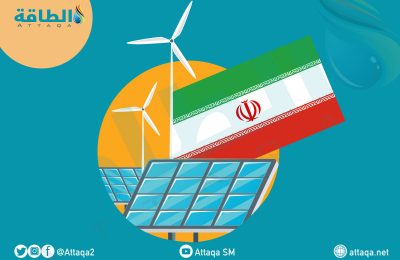The problems of Iran's electricity industry will continue
Dr. Umud Shokri

Iran has faced power outages in recent years, despite its huge oil and gas resources and great potential in renewable energy. Last summer, and even earlier, in the winter of 2020, power outages created a lot of problems for people.
Former Minister of Energy Reza Ardakanian said in June 2021 that the imbalance in electricity production and consumption this summer is 12,000 megawatts.
In November, the Iranian parliament stated in a report that the practical capacity of electricity generation in the country at the peak of this summer was 56,000 MW and consumption at the peak was 66,400 MW.
Unprecedented increase in electricity consumption due to the growth of consumption of industries by 1500 MW, extraction of crypto currency with consumption of more than 2,000 MW, unprecedented increase in temperature, unprecedented drought that reduces rainfall and more than half of hydropower plants out of production circuit, Among the factors that were attributed to the imbalance of electricity production and consumption.
Investment in energy projects

last week Jvad Owji, Iran's oil minister said that Iran needs $ 80 billion over the next eight years to supply the country natural gas demands.
Javad Owji, like last year, warned of a shortage of electricity and gas this summer, as did other government official
s. In recent years, Iran has been unable to attract foreign investment in energy projects due to sanctions and political and economic insecurity in the country.
lack of investment to optimize oil and gas facilities has left the country short of energy in some months of the year.
Due to the possibility of power outages in the coming months, the Iranian government has entered into contracts with neighboring countries to purchase electricity, while in February, the Minister of Energy Mehrabian claimed that Iran could become a power hub in the region based on geographical location.
Mostafa Rajabi Mashhadi, spokesman for Iran's electricity industry, said that contracts had been signed with Turkmenistan and Armenia, and that Iran would soon import electricity from Azerbaijan, which could bring in a total of about 500 to 600 megawatts of electricity. According to Mostafa Rajabi, according to estimates, the need for electricity consumption will reach 70,000 MW this summer, which shows a growth of 4.46% compared to last year's peak.
100 operational plans have been developed to compensate for the imbalance between electricity production and consumption.
These plans have been formulated and announced in four axes, including planning and measures of electricity supply, consumption and demand management, preparation of the national electricity network, and planning and management.
A spokesman for the electricity industry said that about 6,000 megawatts is the sum of new power plants or upgrading the production capacity of old power plants, which can produce more by upgrading and installing equipment; But there is still an electricity imbalance, In addition, other plans have been made to use hydropower plants, and despite the fact that the capacity of these power plants has been reduced by 10% due to unprecedented drought compared to last year, we will continue to use these power plants to provide electricity.
Problems of Iran's electricity industry
One of the major problems of Iran's electricity industry is the low efficiency of the power plant. In April 2021, it was announced that for the first time in the electricity industry, the efficiency of Iran's thermal power plants has reached 39%.
Two years ago, according to the Ministry of Energy, the efficiency of Iran's thermal power plants was 36.5.
It should be noted that this figure is less than half the efficiency of advanced thermal power plants in the world. Thus, half of the fuel consumed by these power plants is practically wasted.
Despite all efforts, the efficiency of thermal power plants in Iran is still lower than the world standard.
Increasing the productivity of power plants, reducing the amount of fuel consumed and optimal use of fuel allocated to thermal power plants in the country are the most important benefits of increasing the efficiency of thermal power plants.

According to the Sixth Development Plan (2016-2021), 25,000 MW should be added to the capacity of the country's power plants, of which 3700 MW per year and a total of 18,500 MW of this figure is related to thermal power plants.
According to the Sixth Development Plan's five-year plan, the government must increase the share of renewable and clean power plants to at least five percent by the end of the plan; But according to a spokesman for SATBA (the Organization for Renewable Energy and Energy Efficiency), the share has now reached one percent, which is lagging behind the years since the program began.
Problems of renewable energy
Numerous problems prevented the previous administration from achieving its goals in the field of renewable energy.
In addition to the issue of sanctions and the impossibility of attracting foreign companies, exchange rate fluctuations in recent years and the unattractiveness of renewable energy and unfair electricity prices made it impossible to use the great potential of the renewable energy sector.
In Summer electricity outages seem certain due to the many problems and the high level of domestic consumption.
Changing consumption patterns, improving the transmission network, increasing power plant efficiency and increasing electricity generation capacity.. in the short run are not cases that the Raisi administration can solve without considering Iran foreign policy.







